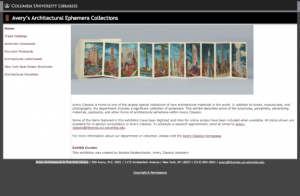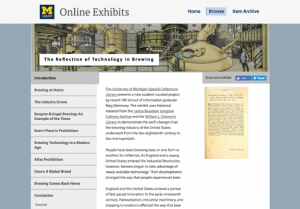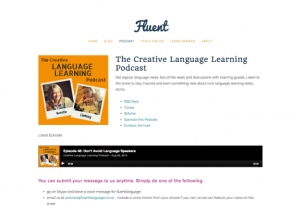Research and Education
Back to Top
|
 |
|
Louie B. Nunn Center for Oral History
|
Social studies |
|
In 1973, the University of Kentucky began to collect oral histories from around the Bluegrass state. The project continues to this day. On this website, visitors can browse or search through over 8,000 of these oral history interviews, which are arranged by broad topics including Agriculture, Industries, Diversity, Education, Gender, and Veterans and Conflict. Within each of these categories, visitors will find dozens of oral history projects, which each feature interviews with multiple individuals around a specific topic or theme. Project titles include: Black Life in Mississippi in the 1950s; Midwifery; Immigrants in the Coal Fields; and Beyond Wood, Wires, and Glue: Young Banjo Players of Kentucky. As one can gather from this diverse list, this website features material that will be of interest to history students in a wide variety of fields and areas. Most of these interviews are available in their entirety online, and some include transcripts as well. [MMB] |
|





|
|
 |
|
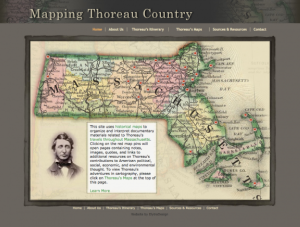 |
|
Mapping Thoreau Country
|
Social studies |
|
Henry David Thoreau was a writer, philosopher, activist, and traveler. In fact, Thoreau once wrote, "A traveler! I love this title...Going from to , it is the history of every one of us." Mapping Thoreau County is a project headed by Susan E. Gallagher of the University of Massachusetts Lowell with additional scholarly support from English and History professors around the country and financial support from the University of Massachusetts Lowell and the Massachusetts Foundation for the Humanities. The project documents the role that travel played in Thoreau's life and writing, introducing readers to maps sketched by Thoreau himself along with information about places that were central to Thoreau's life. In doing so, the site aims to provide English teachers and students with materials that contextualize Thoreau's prose. Dr. Gallagher continues to add to this website and will be including maps and artifacts from Thoreau's visits out of state, including to New York and Minnesota. The team aims to have the site fully updated by 2017, the 200th anniversary of Thoreau's birth. [MMB] |
|





|
|
 |
|
BMC Medical Education
|
Health |
|
Part of the extensive BioMed Central collection of journals, BMC Medical Education is an open access, peer-reviewed journal dedicated to issues in all stages of medical education, including undergraduate studies, graduate studies, and continuing education for medical professionals. This journal will be of interest to those in academia as well as those broadly interested in the medical field, as journal articles address a broad array of issues, such as medical school curriculum, pedagogy, and assessment. Recent articles include a discussion about using student questions to identify scientific misconceptions, an analysis about the need to train doctors to prescribe medicine, and an examination of licensing tests used in different countries. Visitors to this website can browse the most recently published and most popular articles, or search for articles by keyword. BMC Medical Education is edited by an international team of scholars and is regularly updated. [MMB] |
|





|
|
 |
|
Wabash Center for Teaching and Learning: Religion on the Web
|
Religion |
|
The Wabash Center for Teaching and Learning in Theology and Religion, under the leadership of librarian Charles Bellinger, curates this extensive list of resources for exploring religion online. Visitors can browse for resources by broad topic headings including Best of the Web; Archaeology, Bible, and Classics; and Pedagogy. Visitors can also search for resources by material type, including blogs, online books, maps, language resources, and electronic journals. In 2011, the Wabash Center partnered with the American Academy of Religion to add university syllabi to enhance its collection. Today, visitors can search for and read these syllabi on this website as well. Note that the Wabash Center curates resources to reflect a diversity of religious views for the purposes of research and learning and does not necessarily endorse the views contained in all linked resources. [MMB]. |
|





|
|
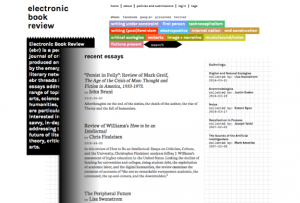 |
|
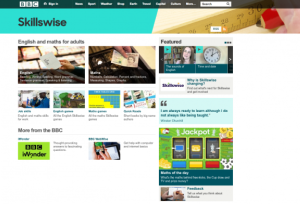 |
|
BBC Skillswise
|
Vocational Education |
|
In 2001, the BBC created Skillswise, a free online tool developed to assist adult learners and adult educators on topics of English literacy and math. On this website, visitors will find resources that may be of interest to Teaching English to Speakers of Other Languages (TESOL) instructors, mathematics instructors, General Equivalency Diploma (GED) or High School Equivalency Test (HiSET) instructors, and instructors in certain community college programs. Resources include videos, dictionaries, online quizzes, worksheets, and interactive online activities. Visitors can browse sources by topic. In the Job Skills section, instructors can find resources about the English and math skills needed for job interviews and searches, as well as resources about specific vocations, including Nursing, Child Care, Construction, Manufacturing, and IT work, to name just a few. [MMB] |
|





|
|
 |
|
The Keepers Registry
|
Educational Technology |
|
Over the last 25 years or so, the majority of large research libraries has transitioned from owning miles of shelves of bound volumes containing scholarly journal back issues, to subscribing to that same content in digital format. This has made archiving and preserving these digital files, or e-journals, of critical importance to scholars. The Keepers Registry is a collaborative effort committed to doing just that. Currently there are 12 participating agencies, including the Library of Congress, the British Library, Cariniana Network, National Science Library, Chinese Academy of Sciences, and the HathiTrust, among others. The aim of the registry is to make it easier to see which archiving organization is taking responsibility for which e-journals, and to make it possible for librarians and policy makers to more easily identify e-journals that might be at risk. Since the beta version of the registry launched in 2011, over 32,000 journals have been archived by at least one of the participating archiving agencies. Follow The Keepers Registry blog at http://thekeepers.blogs.edina.ac.uk for more news and updates. [DS] |
|





|
|












